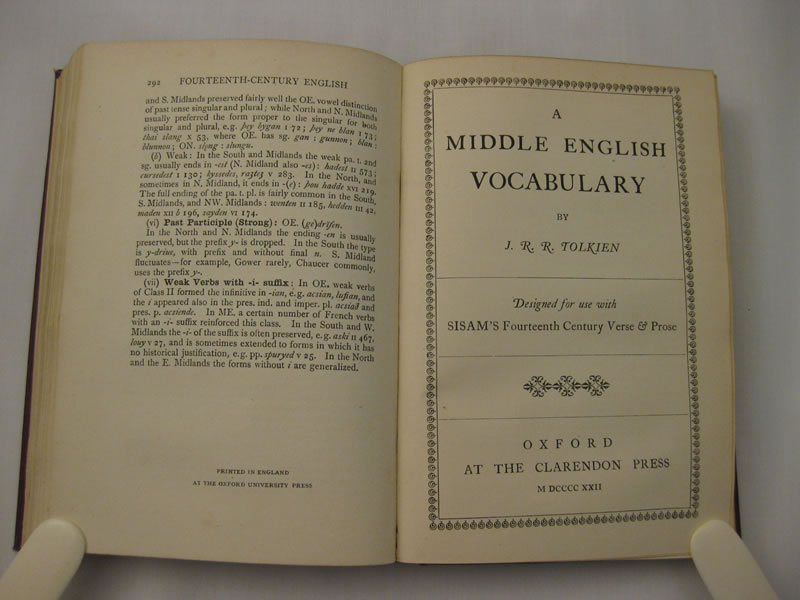The Grading of Tolkien Books
Once you know what the parts of the book are, you can begin to describe its condition. Currently most dealers describe the book and dust jacket separately thus: F/VG which would indicate a book in fine condition with a very good condition dust jacket.
Also note that a simple letter code is not sufficient as a description. You mustspecifically describe each defect that has resulted in a grade less than fine.
Here are the most common codes:
• AN - As New. This is blindingly perfect. Almost
never happens. Most books don't actually make it into a new bookstore
in this condition.
• F - Fine. Sorta normal perfect. No flaws of any
kind. No, not even teeny ones.
• NF - Near Fine. Well, ok, maybe real teeny flaws
here. Like the gloss on the dust jacket is a bit off.
• VG - Very Good. Pretty darned nice. Might have
one or two very small flaws. A bit of rubbing on the jacket. Light shelfwear
maybe. But nothing that would actually qualify as a major defect.
• G - Good. A nice solid copy. This is what you
would normally expect in a secondhand book. Might have a few defects,
but certainly nothing missing, no severe problems.
• Fair - (no letter code here, ya gotta spell it
out). Probably a pretty nasty looking copy. Likely has quite a few defects,
tears, dampstains, weak binding etc. But it is complete.
• Poor - Shoulda gone in the trash.
• XLib - Ex Library copy. This just means that it
has been in a library. Will have library markings. The condition should
be described as well. But XLib mustalways be noted as it's a very serious
flaw.
Here's a short list of don'ts:
• Don't say "pretty good for it's age".
• Don't say "else fine". Either it is or it isn't.
• Don't copy someone else's bibliographic description word for word.
While condition is likely the most important part of the description, there are also standard methods of describing the collation and particularities of a book. Descriptive bibliography is a big subject, and requires quite a bit of study. Two good beginning texts on descriptive bibliography are Fredson Bowers' Principles of Bibliographical Description and Philip Gaskell's A New Introduction to Bibliography.
For a really good education in describing your Tolkien books, and have
a lot of fun reading all about tolkien's work, find J. R. R. Tolkien:
A Descriptive Bibliography. (1993). Wayne G. Hammond. New
Castle, DE: Oak
Knoll Books
This book is a perfect example of how to write a bibliography. Combine
this by going and finding some books at online stores like Abebooks or Antiqbook and you'll soon get the hang of it!
Spread the news about this J.R.R. Tolkien article:
